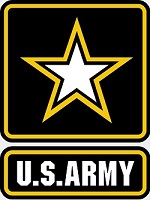Air Force 1 AF10099C US Army Sikorsky HH-60W Black Hawk Search and Rescue Helicopter - "White 51C" (1:72 Scale)
"Obsolete weapons do not deter."
- British Prime Minister Margaret Thatcher
 Sikorsky's HH-60W, called the "Whiskey" model, is the replacement helicopter for the HH-60G Pave Hawk and features longer range, improved survivability, updated avionics, and a new fuel system. Both models are derivatives of the long-running UH-60 Blackhawk.
Sikorsky's HH-60W, called the "Whiskey" model, is the replacement helicopter for the HH-60G Pave Hawk and features longer range, improved survivability, updated avionics, and a new fuel system. Both models are derivatives of the long-running UH-60 Blackhawk.
The platform was designed to be used to recover isolated personnel from hostile or denied territory in a variety of threat environments, as well as for disaster relief, medical evacuation, and humanitarian missions. "The Whiskey came to Kadena to replace the Pave Hawk, which has been in service here since 1993 and has saved countless lives not only in Afghanistan but across the Indo-Pacific," said Lieutenant Colonel Louis Nolting, 33rd Rescue Squadron commander. "The HH-60W gives us a modern, combat-capable helicopter with improved power avionics, defensive systems, weapon systems, survivability, and personnel recovery."
Pictured here is a 1:72 scale replica of a US Army Sikorsky HH-60W Search and Rescue Black Hawk helicopter.
Pre-order! Ship Date: May 2024.
Dimensions:
Length: 8-1/2-inches
Release Date: ?
Historical Account: "Combat Casualty Care" - Casualty evacuation, also known as CASEVAC or by the callsign Dustoff or colloquially Dust Off, is a military term for the emergency patient evacuation of casualties from a combat zone. Casevac can be done by both ground and air. "DUSTOFF" is the callsign specific to U.S. Army Air Ambulance units. CASEVACs by air today are almost exclusively done by helicopter, a practice begun on a small scale toward the end of World War II; before that, STOL aircraft, such as the Fieseler Fi 156 or Piper J-3 were used. Casevac aircraft are a non standardized and non dedicated vehicle, that does not necessarily have en route care which is used to get a casualty back to another location where they can be treated by professional medical staff.
The primary difference between a CASEVAC and a medical evacuation (MEDEVAC) is that a MEDEVAC uses a standardized and dedicated vehicle providing en route care. On the other hand, CASEVAC uses non-standardized and non-dedicated vehicles that may or may not provide en route care. CASEVACs are commonly referred to as "a lift/flight of opportunity". If a Corpsman/Medic on the ground calls for a CASEVAC, the closest available unit with space could be called to assist, regardless of its medical capabilities. This could include U.S. Marine Corps aircraft such as the MV-22 Osprey, U.S. Navy SH-60 Seahawk helicopters,or CH-46 Sea Knight helicopters. The guiding principles in a CASEVAC is to transport casualties that are in dire need for evacuation from the battlefield and do not have time to wait on a MEDEVAC. MEDEVAC aircraft and ground transport are mandated by the Geneva Convention to be unarmed and well marked. Firing on "clearly marked and identified" MEDEVAC vehicles would be considered a war crime under Article II of the Geneva Convention, in the same sense as firing on a hospital ship would be a war crime. CASEVAC transport are allowed to be armed since they are normally used for other purposes but carry no penalties for engagement by hostile forces.
"Dust Off" was the tactical call sign for medical evacuation missions first used in 1963 by Major Lloyd E. Spencer, Commander of the U.S. Army 57th Medical Detachment (Helicopter Ambulance). The name lasted the rest of the war. Typically air ambulances transport wounded soldiers categorized as "urgent" patients from point of injury to a medical facility within an hour of soldier(s) being wounded. Flying into an active landing zone to pick up wounded was a dangerous job. Peter Dorland and James Nanney wrote in Dust Off: Army Aeromedical Evacuation in Vietnam, "... slightly more a third of the aviators became casualties in their work, and the crew chiefs and medical corpsmen who accompanied them suffered similarly. The danger of their work was further borne out by the high rate of air ambulance loss to hostile fire: 3.3 times that of all other forms of helicopter missions in the Vietnam War."
All members of the US Armed Forces today are trained in some form of basic first aid. While lacking advanced life saving equipment and medical personnel in regular vehicles, all personnel today enter the combat zone with an Improved First Aid Kit (IFAK) on their equipment. The IFAK has basic medical supplies such as bandages, a tourniquet, and QuikClot gauze. Most units have stretchers and burn blankets in their vehicles. In addition each unit is staffed by a Corpsman or Medic. These professionals are trained in Tactical Combat Casualty Care.
The U.S. Military has worked tirelessly to ensure dedicated MEDEVAC platforms with trained medical personnel are available in the event of a casualty. This has, in part, led to a 90.6% casualty survival rate, compared to 80.9% in World War II.
In Australian military terminology, a CASEVAC refers to the evacuation of a small number of troops, usually just one.


